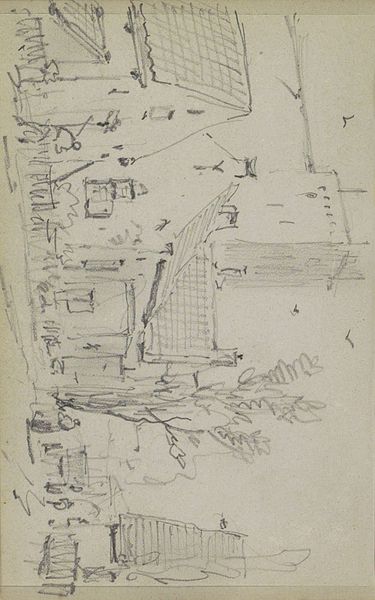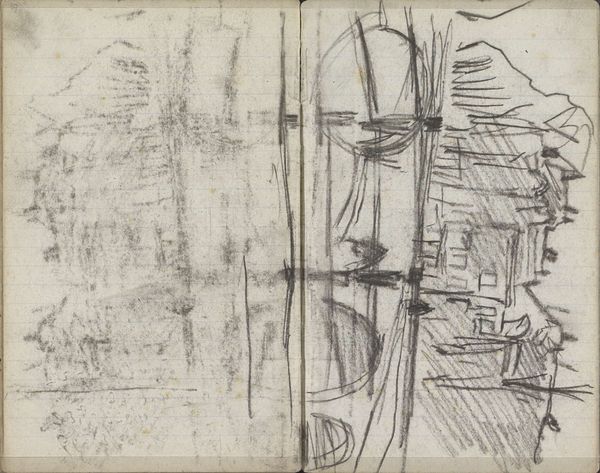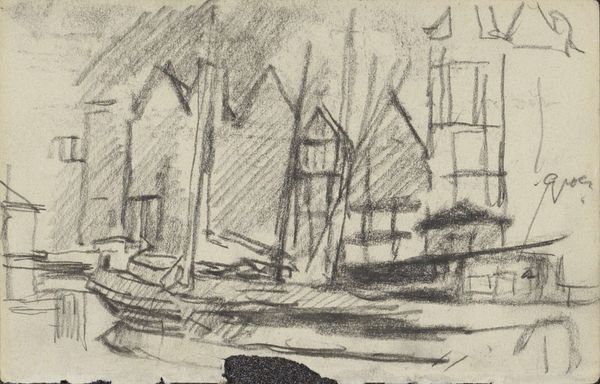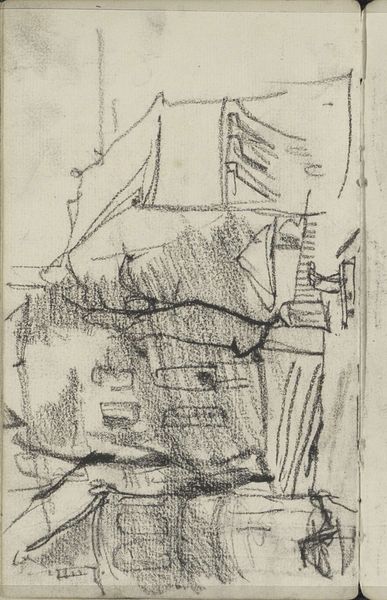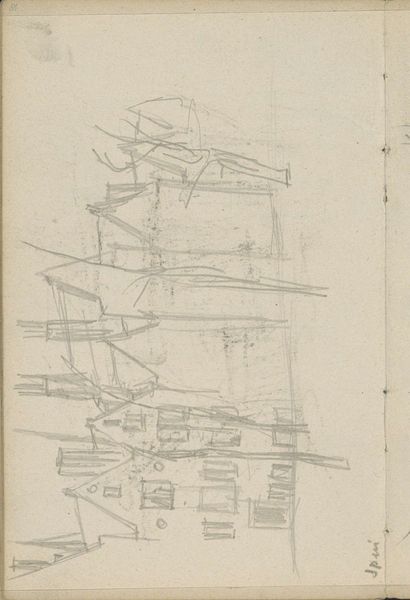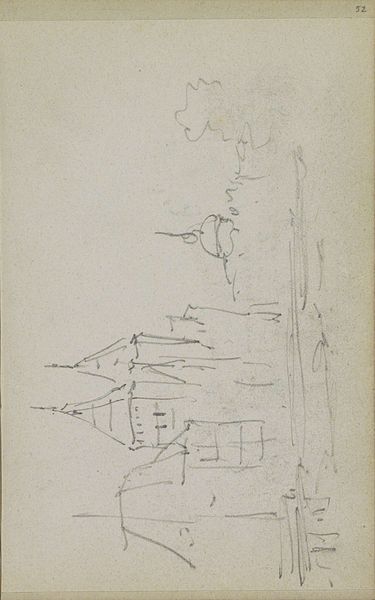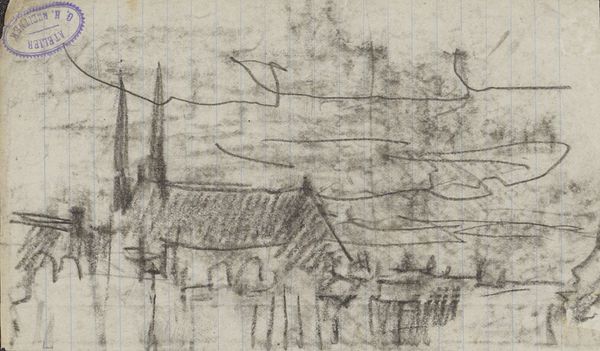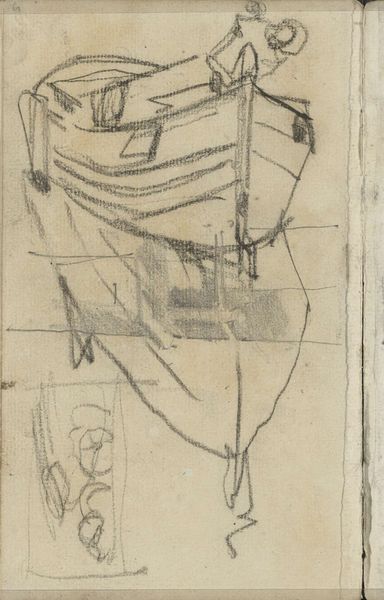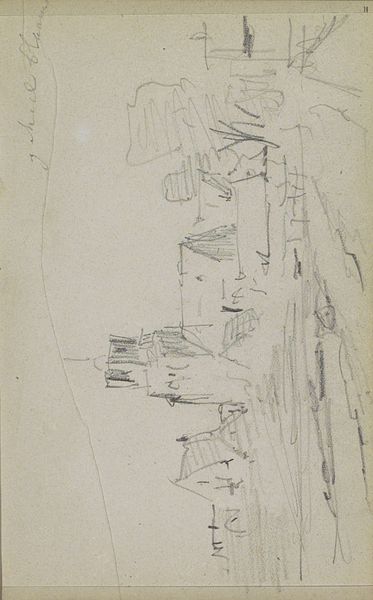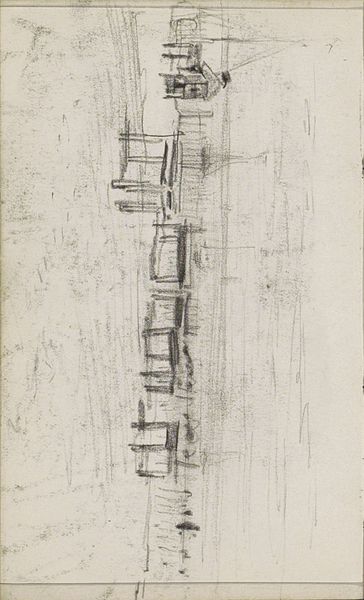
drawing, graphite
#
drawing
#
de-stijl
#
quirky sketch
#
incomplete sketchy
#
hand drawn type
#
house
#
personal sketchbook
#
sketchwork
#
geometric
#
sketch
#
pen-ink sketch
#
abstraction
#
line
#
pen work
#
graphite
#
sketchbook drawing
#
cityscape
#
sketchbook art
#
modernism
#
initial sketch
#
building
Dimensions: 12 x 19 cm
Copyright: Public domain
Editor: This drawing, titled "Abstracted cityscape from sketchbook 130," is by Theo van Doesburg. It appears to be graphite on paper. There’s something very provisional about it, a sense of a fleeting impression being captured. What do you see in this piece? Curator: I see an exploration of the urban landscape filtered through the lens of De Stijl's utopian vision. Look at the way the artist reduces the cityscape to its bare geometric essence: vertical lines, triangles, rectangles. Van Doesburg wasn't simply depicting buildings, but dissecting the very idea of "city," and asking how we might rebuild it according to new social and aesthetic principles. This was post-World War I Europe; what do you think the drive to abstraction might signal in this context? Editor: Maybe a rejection of the old order? A desire for something completely new? Curator: Precisely. De Stijl sought a universal visual language that transcended national boundaries and cultural specificities. But can abstraction truly be politically neutral? Whose “universal” does it represent, and who gets excluded? Notice that although this seems like an ordinary cityscape, its style points toward this new visual language. Editor: That's fascinating. I hadn’t considered the political implications of abstraction so directly. Curator: Considering the social and historical background helps reveal the driving idea behind it. What does a seemingly neutral drawing communicate about its specific cultural and historical contexts, and also about our own present values? Editor: It is definitely a valuable point for a deeper and thorough evaluation. I think that I will delve further to solidify my understanding about it! Curator: Agreed! There's always so much more to unpack when you look beyond the surface.
Comments
No comments
Be the first to comment and join the conversation on the ultimate creative platform.

